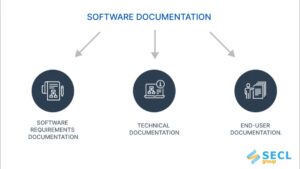Scaling a business is one of the most exciting and challenging endeavors an entrepreneur can undertake. Whether you’re running a small startup or managing a medium-sized enterprise, growing your business effectively can be the key to long-term success. Scaling goes beyond just increasing revenue; it requires smart planning, resource allocation, and adapting to new market dynamics. In this article, we’ll dive into strategies and essential steps you can follow to scale your business successfully, ensuring sustained growth, profitability, and operational efficiency.
Understanding Business Scaling
Before diving into the specifics, it’s crucial to understand what it means to scale a business. Business scaling refers to the process of increasing a company’s revenue without a proportional increase in operational costs. This means that as your company grows, you’re able to maintain or improve profit margins despite the added complexity. Scaling is different from mere growth in that it focuses on creating systems, processes, and structures that allow the business to expand while remaining efficient and profitable.
Scaling is not just about expanding your customer base or multiplying sales figures. It involves optimizing resources, streamlining operations, and managing growth in a sustainable manner. For businesses that aim for long-term success, scalability ensures that they can handle increased demand without losing their competitive edge or sacrificing quality.
Step 1: Have a Clear Vision and Plan
The first step in scaling your business is to develop a clear vision and a detailed growth strategy. Scaling requires foresight and planning. A successful business scaling plan aligns your vision with your long-term goals, focusing on what the business needs to achieve to expand successfully.
Start by identifying your company’s strengths and areas of improvement. Consider the scalability of your existing business model. For example, if your model depends heavily on physical storefronts, scaling could require the addition of new locations or the exploration of an online market. On the other hand, if you are in a digital space, scaling might involve developing new software tools, expanding your digital footprint, or diversifying your services.
The plan should also address the resources you’ll need. What kind of talent, technology, infrastructure, or capital will you require to grow? Set specific, measurable goals for both short-term and long-term achievements. This will allow you to track your progress, adjust strategies when needed, and keep your team aligned.
Step 2: Invest in the Right Talent and Team
As your business grows, so will the need for talent. One of the most critical aspects of scaling your business is ensuring you have a skilled, dedicated, and well-coordinated team. Your people are your greatest asset when it comes to expansion.
Investing in the right talent goes beyond hiring people with the technical skills required for the job. It’s also about building a team that shares your vision and is committed to the company’s values. During scaling, there will be new challenges and changes. Having a strong team that can adapt, learn, and stay motivated through the growing pains of scaling is invaluable.
Start by identifying the key roles that will be necessary as you grow. This could include leadership positions, marketing, finance, operations, and customer support. Ensure that you hire individuals who are not only capable but also fit well into your company’s culture. Scaling often involves a shift in responsibilities, so hire people who are flexible and willing to take on new challenges as the company evolves.
Training and development are also crucial at this stage. Even experienced professionals need support to learn the specific needs of your business. A robust onboarding and continuous training program will help your employees stay engaged, improve performance, and contribute to your business’s overall growth.
Step 3: Streamline Your Operations and Automate Processes
Operational efficiency is essential when scaling. The larger your business becomes, the more complex your operations will be. To scale successfully, you need to ensure that your processes are as efficient as possible. This means finding ways to streamline operations, reduce redundancies, and improve productivity.
One of the most effective ways to streamline operations is through automation. Automating routine tasks frees up your team’s time and allows them to focus on more strategic work. Whether it’s automating your accounting processes, customer relationship management (CRM), marketing campaigns, or inventory management, automation tools can significantly increase your business’s efficiency. Investing in good software solutions can help your business scale without requiring proportional increases in your workforce.
Additionally, regularly reviewing your operations to identify bottlenecks or areas for improvement will help you stay on track. Look for manual processes that can be digitized, unnecessary steps that can be eliminated, or tasks that can be outsourced. Outsourcing non-core functions such as customer service or IT support can also reduce operational costs, allowing your internal team to focus on high-impact activities.
Step 4: Focus on Customer Experience and Retention
While acquiring new customers is important, focusing on customer retention during the scaling process is just as crucial. The longer customers stay with your business, the more valuable they become. Building strong customer relationships is key to sustaining growth in a scalable way.
Enhancing customer experience should be a top priority. Ensure that your products or services meet or exceed customer expectations. This involves creating an exceptional customer journey, from the moment they first interact with your brand to post-purchase support. Be responsive to customer feedback, address issues promptly, and strive to improve their experience at every touchpoint.
A satisfied customer is likely to return and recommend your business to others, fueling organic growth. Building loyalty programs, providing personalized experiences, and maintaining consistent communication with customers can further drive retention rates. Satisfied customers will also become your advocates, helping you reach new prospects and grow without the high cost of traditional marketing.
Step 5: Leverage Technology and Digital Tools
In today’s digital age, leveraging technology is essential for scaling any business. Digital tools can help you expand quickly without the need for extensive physical infrastructure. Whether it’s cloud-based solutions, customer relationship management (CRM) software, project management tools, or e-commerce platforms, integrating technology into your business operations will improve efficiency and scalability.
The right technology stack can enable your business to handle a growing number of customers, transactions, and interactions. Moreover, digital tools allow you to make data-driven decisions, measure performance in real-time, and stay agile as you scale. Investing in cybersecurity measures is also critical to protect sensitive business data as you expand.
Social media and digital marketing platforms offer valuable opportunities to reach new customers and grow your brand awareness. Tools such as Google Analytics, email marketing platforms, and social media scheduling tools help you track your marketing campaigns and customer engagement, giving you the insights necessary to optimize your efforts.
Step 6: Secure Funding and Manage Cash Flow
Scaling often requires capital. Whether you’re investing in new technology, hiring staff, expanding product lines, or opening new locations, having sufficient funds is necessary to fuel growth. At this stage, you may need to explore various financing options such as loans, venture capital, or angel investors.
However, securing funding is only part of the equation. You also need to manage cash flow effectively. Scaling your business without maintaining proper cash flow can lead to cash shortages, which can undermine your ability to pay employees, suppliers, or invest in growth initiatives. Keeping track of your income and expenses, forecasting your cash flow needs, and ensuring you have a financial cushion for emergencies will help you scale without compromising your financial health.
It’s important to maintain a balance between reinvesting profits back into the business and having enough liquidity to manage everyday expenses. A well-structured financial plan will help you make informed decisions about scaling, avoiding over-leveraging your business and ensuring you remain financially stable as you grow.
Step 7: Monitor Progress and Adjust Strategies
Once you’ve started scaling your business, it’s essential to track your progress closely. Regularly assess your performance against your initial goals and key performance indicators (KPIs). Be prepared to adjust your strategies based on new insights or unforeseen challenges. Scaling a business is rarely a straight path, and being flexible allows you to pivot when necessary.
This means regularly reviewing financial statements, customer feedback, employee performance, and market trends. If something isn’t working as expected, identify the root cause and make changes quickly. Whether it’s tweaking your marketing strategy, adjusting your product offering, or improving operational processes, the ability to adapt is one of the most important factors in successful scaling.
Furthermore, as your business grows, new challenges and opportunities will emerge. Stay proactive in identifying areas where you can continue to innovate or streamline processes to keep your business competitive in an evolving market.
Conclusion
Scaling a business is an ambitious but achievable goal, and with the right strategies, it’s possible to grow your company into a successful, sustainable enterprise. By having a clear vision, investing in the right talent, streamlining operations, and focusing on customer retention, you’ll be well-positioned to scale effectively. Leverage technology, secure the right funding, and continuously monitor your progress to ensure that your business can handle the complexities of growth.
Scaling is not an overnight process, and it requires careful planning and dedication. However, by following the steps outlined above, you can set your business up for success, allowing you to thrive in a competitive landscape and achieve long-term profitability.



